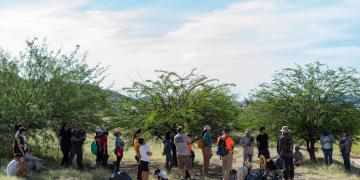Institutional strengthening and governance of natural assets
Capacity building for the mobilization and empowerment of vulnerable groups
Ecosystem-based adaptation (EbA) with a sustainable livelihoods approach
Citizen monitoring
Knowledge Management and Climate Change Adaptation
